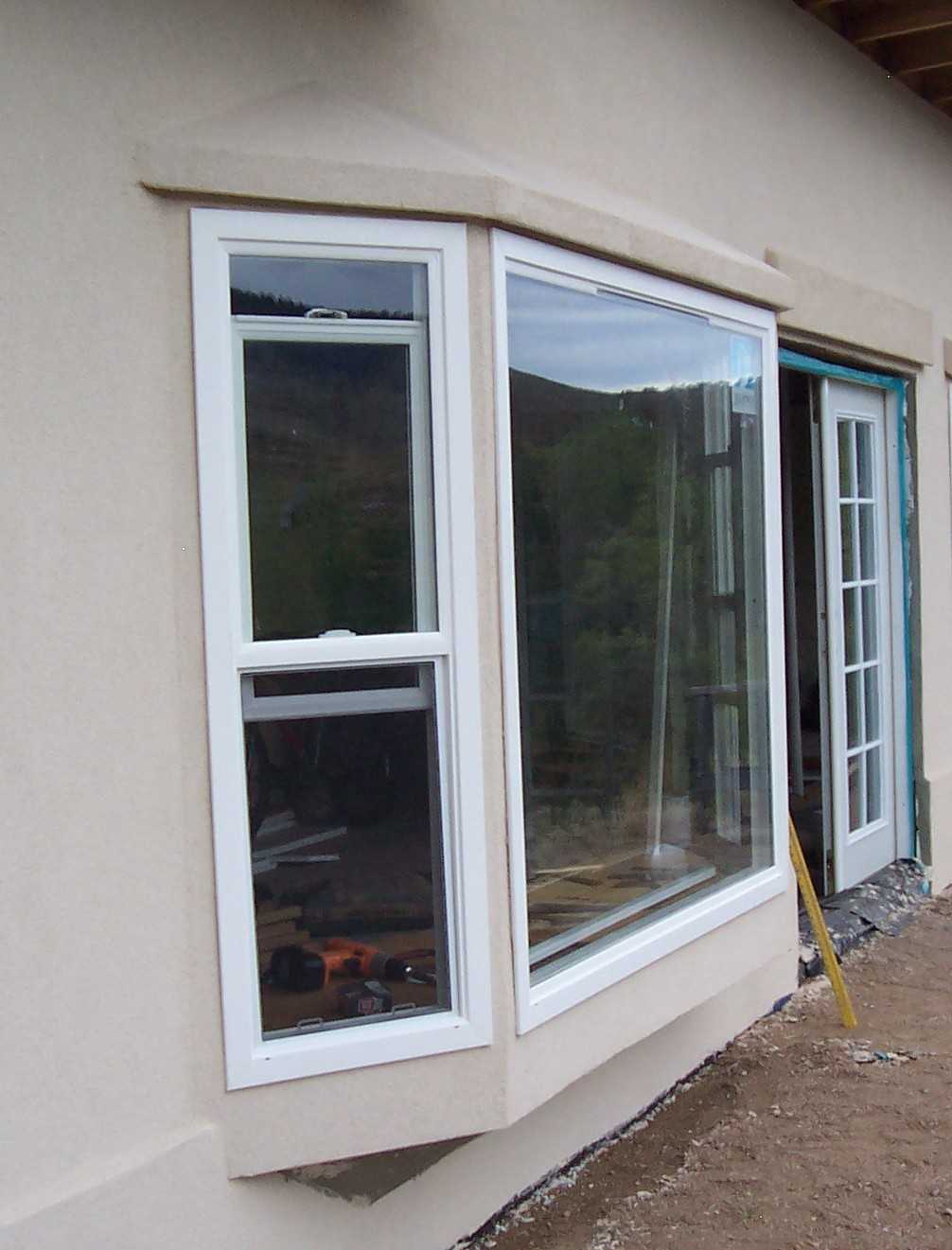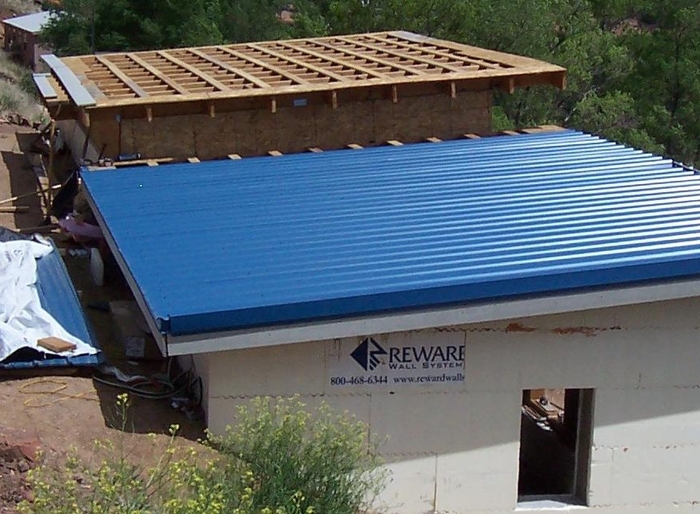Stucco
To give the ICF foam and OSB exterior materials a nice finish, I used an
EIFS (Exterior Insulative Finishing System). More specifically, I used
"synthetic" stucco. It's called "synthetic" because it's not true stucco
that's made from cementitious products. It's a polymer-based product, made
by the DryVit Company.
EIFS is used commonly now, because of:
- Its insulative properties (R7 for a 2-inch foam underlayment).
- Its clean look (it's easier to make it a uniform thickness, as well as
apply different sizes of "grain" to the surface).
- Its costs.
I didn't need an extra layer of foam insulation for the back and side walls of my house,
because they were already ICF (insulated concrete form) walls. But on the framed 2x6 walls,
which are "only" just a little over R-19, I added an extra 2" of foam. That brings these
walls to R-26 approximately. I thought it was worth the extra cost. I didn't calculate
the additional payback time. Plus the EIFS system I bought was designed to work best
on top of the styrofoam I used.
The cost of the stucco (and underlayment) materials are higher than that of
traditional stucco. But the labor in applying it is lower, because there are
only 2 coats to apply, and it's not nearly as thick as stucco.
I don't have any
numbers to show the differences. I just know it looks great as well as provides
additional insulation to my already well-insulated house.
I like the way my bay window turned out. (This is midway through the project, so not all
the stucco is finished. And the deck wasn't even conceived yet.) The stucco-over-foam
system gave me a lot of opportunity to be creative in a 3-dimensional way. Fun!

They took almost an extra 3 weeks of
design, carpentry, and finishing. But I think it was worth it. I wasn't in a hurry
that summer. And I'm glad I paid a little extra for those "flush fin" windows.
They make a really clean exterior, without any extra cracks for water or dirt to
get into -- and cause lots of problems.
Steel Roof
In Colorado, asphalt roofs take a pounding. The extremes of temperatures, both from
summer to winter as well as night to day, cause quicker wear on that type of roof.
Also the higher altitudes cause quicker wear due to the increased UV rays that are
not screened out by an additional 5000 ft of atmosphere.
So I chose to buy steel roofing for my house. Its covered with baked-on enamel, which
I've been told gives it at least a 25-year expected lifetime. My structural engineer
told me that I could install purlins (1"x4" boards perpendicular to the rafters) at
24" on center. For additional strength, I installed them at 16" on center.

Using purlins is more resource-efficient than using OSB or plywood decking, and
it puts less dead load on the rafters. Not that big of a deal,
but every little bit counts, right?
